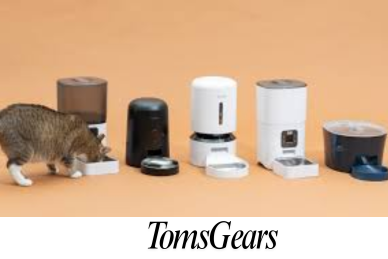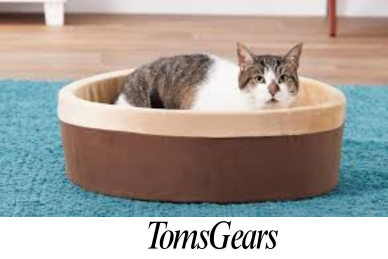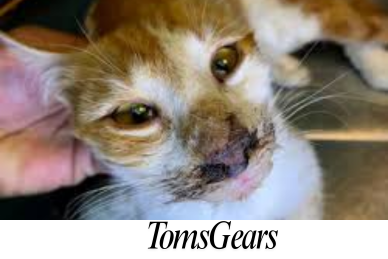Cat Puffy Tail and Purring – What Does It Mean?
Have you ever watched your feline friend strut around with a puffed-up tail, only to hear them rumbling with a contented purr? It can be pretty confusing! Cats are masters of subtle communication, and deciphering their body language can feel like solving a mystery. Don’t worry! This guide will be your purrfect companion in understanding the hidden messages behind a puffy tail and purring. We’ll explore what these behaviors mean on their own and how to interpret them when they appear together.
What Do Puffy Tail and Purring Indicate?
These seemingly straightforward behaviors can actually reveal a surprising range of emotions in your cat. A puffed tail doesn’t always mean anger, and purring isn’t just a sign of pure contentment. Let’s unpack the meaning behind each of these signals.
Meaning of Puffy Tail
A puffed-up tail, also known as piloerection, is caused by tiny muscles at the base of each hair that contract, making the fur stand on end. This inflation can be caused by several reasons:
- Fear or Threat: This is the most common reason for a puffed tail. When a cat feels scared or threatened, they puff up their tail to appear larger and more intimidating to a perceived threat. Imagine it as a feline version of puffing out your chest!
- Playfulness: Kittens and playful cats may also puff up their tails during playtime. This is often accompanied by stalking, pouncing, and batting at toys or other cats. Think of it as a playful “Look at me, I’m a ferocious hunter!” pose.
- Anger: An angry cat might also puff up its tail. In this case, the tail might be held high and twitching, and the cat might also hiss or arch its back. This is a clear warning sign that your kitty is not happy, so it’s best to give them some space.
- Cold: In some cases, a cat might puff up its tail to trap more air and stay warm if they’re feeling cold. It’s a furry little sweater for those chilly nights!
Meaning of Purring
Purring is a unique vocalization that cats use to express a range of emotions. We often associate purring with happiness and contentment, and that’s certainly one meaning. Essentially, a cat purr is them vocalizing their affection back to you, which can often be accompanied by your cat licking you, a head butt, or kneading as delightful signs of the close bond between you. Happiness as a result of being with you can also explain why a cat purrs so loudly. It’s their way of saying, “Hey there, human, you’re pretty alright!”
However, cats are complex creatures, and purring isn’t always a sign of pure joy. Cats purr during stressful times, and the low frequency vibration can help them relax and breathe more calmly. Purring can also be intentional in stressful situations. Imagine a cat at the vet’s office – they might purr to try and soothe themselves amidst the unfamiliar sights and smells. Plus, cats may purr when hurt or injured to soothe themselves. Research has revealed that the vibration of a purr may actually help cats to heal! So, while purring can often indicate contentment, it’s important to consider the context to understand the full message.
What Does It Mean When You See Your Cat’s Puffy Tail and Purring?
Now, the million-dollar question: what does it mean when you observe your feline friend’s tail puffed up and them purring simultaneously? The answer can be a bit tricky, as it depends on the overall context and body language of the cat.
When a cat is happy and content, their tail may puff up, but the movement will be more relaxed, and the fur will appear soft and fluffy. In this case, the purring is likely a sign of their enjoyment and trust in your presence. They may even engage in behaviors like kneading their paws, further reinforcing their state of bliss.
On the flip side, a cat with a puffed-up, rigid tail and a simultaneous purr might indicate a very different emotion – fear or aggression. In this scenario, the puffed-up tail is a defensive response to a perceived threat, and the purring could be an attempt to calm themselves down or even a warning of the perceived danger. You might also notice other signs of distress, such as an arched back, flattened ears, and potentially hissing or growling.
People Also Ask
Why do some cats purr more than others?
The frequency and intensity of a cat’s purring can vary quite a bit from one feline to another. Some cats are simply more vocal by nature and will purr more often, especially when interacting with their favorite humans. Factors like breed, age, and individual personality can all influence a cat’s propensity to purr. More social, affectionate cats tend to be bigger “talkers” than more reserved, independent felines.
Can cats purr while they’re sleeping?
Yes, it’s not uncommon for cats to purr while napping or even in a deep sleep. The purring may be softer and more intermittent, but the soothing vibrations can continue even when a cat is resting. This is thought to be a sign of contentment and comfort, as the cat feels safe and relaxed in their environment.
Do all cat breeds have the same purring behaviors?
While purring is a common behavior across all domestic cat breeds, the specific purring patterns and tendencies can vary. Some breeds, like Siamese and Ragdoll cats, are known to be particularly vocal and expressive with their purrs. Other more reserved breeds, like Russian Blues, may purr less frequently. But in general, the ability to purr is universal among felines.
Can a cat’s purr be heard from a distance?
Yes, a cat’s purr can be heard from a distance because it produces a lower frequency sound that can be heard from greater distances. The average domestic cat purrs at a frequency of 25 to 150 Hertz (Hz), which most humans can hear.
What are some other vocalizations cats make besides purring?
In addition to purring, cats have a range of other vocalizations in their communication toolkit. These include meowing, yowling, hissing, growling, and even chirping or trilling. Each sound serves a different purpose, from greeting owners to expressing displeasure or fear. Understanding these diverse vocalizations can help owners better interpret their cat’s mood and needs.
End Notes
There’s always more to learn about the wonderful world of cats. While we’ve unraveled the meanings behind a cat’s puffy tail and purring, the journey of understanding our furry friends is ongoing. Remember, every cat is unique, and their communication is a delicate dance. If you have any other questions, feel free to leave a comment below. I’m always eager to discuss the fascinating behaviors of our feline companions. Until next time, may your days be filled with the soothing sounds of your cat’s purr.






